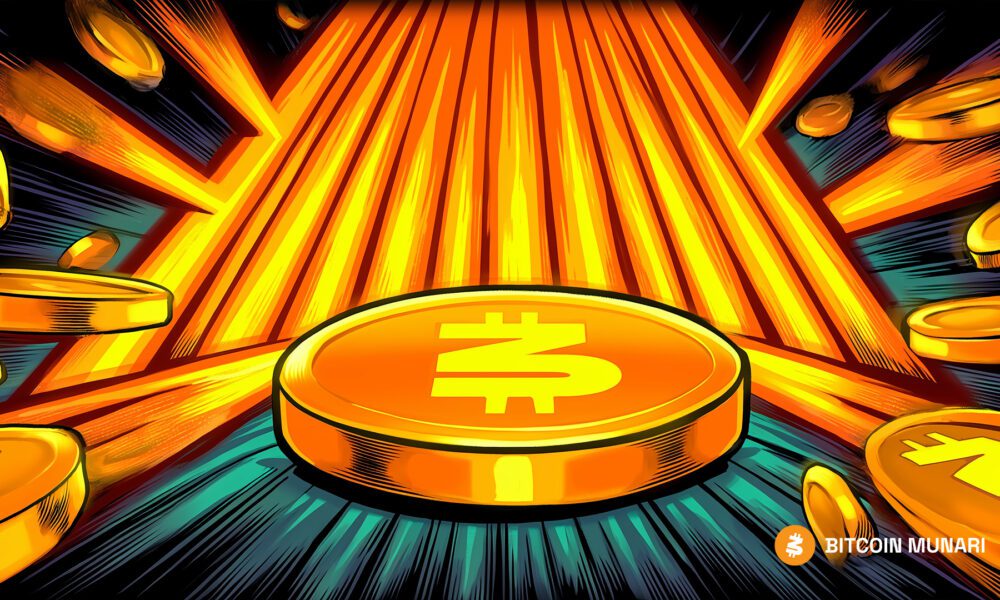ETF Era Synergy: Bitcoin Munari Gains Traction as Institutional BTC Demand Reaches Records

Institutional participation in Bitcoin is increasing even as broader crypto markets weaken, with BTC trading below the $100,000 level. According to SoSoValue data, US-listed Bitcoin ETFs now exceed $120 billion in assets, contributing to a global Bitcoin ETF market of approximately $179.5 billion as of mid-2025. ETF-related accumulation continues despite the market correction, sustaining long-term demand for compliant exposure frameworks.
In parallel, US filings indicate that institutional investors held 22.9% of Bitcoin ETF assets under management during Q1 2025. Additional data shows institutions acquiring 944,330 BTC during Q3 2025, raising institutional holdings to approximately 3.8 million BTC, valued at around $435 billion. Corporate ownership has also expanded, with companies now controlling 14% of Bitcoin’s 21 million supply, excluding holdings by sovereign entities, miners, and decentralized protocols.
Expanding ETF Demand During Negative Conditions
The market downturn has not slowed institutional accumulation of Bitcoin-related financial products. ETF participation remains a major channel for regulated exposure, creating consistent inflows even during periods of price deflation. The $120 billion held in US-listed ETFs reflects sustained interest among funds, asset managers, and corporate treasuries.
Global ETF markets show similar trends, with roughly $179.5 billion allocated to Bitcoin ETFs across jurisdictions. These figures support the observation that institutions continue to engage with digital assets using regulated products, contributing to long-term market depth regardless of short-term volatility. Q3 2025 accumulation levels highlight continued institutional involvement through both direct holdings and ETF allocations.
Implications for Fixed-Supply Blockchain Assets
The growth in institutional participation draws attention to assets with transparent distribution designs and finite supplies. Bitcoin Munari uses a fixed cap of 21,000,000 BTCM, applied through a predefined allocation schedule. The distribution design assigns 11,130,000 BTCM to the public presale, 6,090,000 BTCM to validator rewards, 1,680,000 BTCM to liquidity reserves, 1,050,000 BTCM to the team under vesting, and 1,050,000 BTCM to marketing and ecosystem development.
The presale structure consists of ten rounds, beginning at $0.10 and progressing toward a $6.00 benchmark launch price. Presale allocations carry no vesting, enabling immediate access upon SPL deployment. The fixed-supply design, transparent token distribution, and defined presale framework align with increasing interest in assets structured around predictable issuance and constrained supply.
Technical Architecture and Transition Plan
Bitcoin Munari’s deployment follows a two-phase model. The initial Solana SPL phase provides access to high-throughput infrastructure, enabling low-cost transactions and immediate market integration. Following this phase, BTCM migrates to a dedicated Layer-1 chain through a 1:1 conversion process using a purpose-built migration bridge.
The independent chain is built on Delegated Proof-of-Stake, incorporating an EVM-compatible smart contract environment, governance systems, privacy configuration tools, and protocol-level migration mechanisms. The architecture is designed to support sustained network operation, predictable execution behavior, and flexibility for developers using familiar tooling.
Validator Requirements and Reward Distribution
Validator participation is central to the mainnet design. The validator reward pool contains 6,090,000 BTCM, distributed over a ten-year emission period. Full validator eligibility requires a minimum stake of 10,000 BTCM, along with hardware meeting technical thresholds: an 8-core CPU, 32GB RAM, 1TB SSD storage, and a 1Gbps network connection. First-year participant rewards fall in the 18–25% APY range, determined by stake, performance, and network conditions.
Delegation provides an alternative participation method for users not operating validator nodes. A minimum of 100 BTCM can be delegated to existing validators, allowing users to earn proportional rewards adjusted for commission rates. All validator specifications and participation requirements are detailed in the project’s whitepaper, which outlines full-node, mobile, and delegation pathways for the mainnet cycle.
Bitcoin Munari has undergone multiple external assessments during early development. The project completed a smart-contract audit with Solidproof, alongside a separate audit by Spy Wolf. Identity verification for the core team was finalized through Spy Wolf KYC. These reviews form part of the project’s operational preparation prior to the SPL launch, testnet phases, and validator onboarding.These reviews form part of the operational preparation conducted prior to the SPL launch, testnet stages, and validator onboarding.
Market Environment Shaped by Institutional Participation
The presale operates within a market environment shaped by significant institutional participation. US Bitcoin ETFs surpassing $120 billion in assets, combined with institutional accumulation of 944,330 BTC in Q3 2025, illustrate that regulated products and direct holdings continue expanding during periods of macro uncertainty. Corporate BTC reserves rising to 14% of supply further reflect long-term integration of digital assets into corporate financial strategy.
Bitcoin Munari’s presale structure, fixed-supply model, and phased deployment plan provide a defined entry framework as institutions expand their involvement in digital asset markets. The transparent allocation schedule and migration process outline the project’s roadmap from Solana deployment to the independent Layer-1 environment.
Secure BTCM at $0.10 to participate in the presale during a period of record institutional involvement in Bitcoin markets:
Website: official Bitcoin Munari website
Buy Today: secure your tokens here
X/Twitter: join the community





